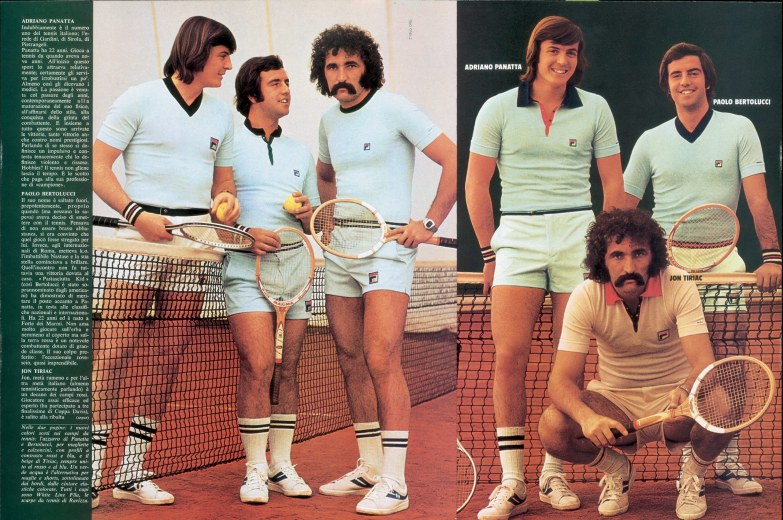FIFTY-YEAR ANNIVERSARY: THE LEGEND OF WHITE LINE
In the beginning, it was all about great Italian tennis players such as Tuscan-born Paolo Bertolucci who was nicknamed ‘the golden arm’ and conquered three clay court tournaments in a single season. Or his long-time friend Adriano Panatta – born in Rome to a working-class family, and whose passionate attitude led him to conquer important tournaments, both singles and doubles.
Their accomplishments paved the way for new generations of foreign talent. Above all (as you already know), Swedish champion Björn Borg, who took the Paris Open six times and Wimbledon five with his naturally meticulous attitude and ‘back of the court’ positioning. Not to mention Boris Becker, the German player who won Wimbledon at the age of 17 (the youngest in the event’s history) and was nicknamed ‘Boom Boom’ for his physical strength. And of course, female athletes played a key role. Evonne Goolagong Cawley is one of the most important Australian players of all time, and the only indigenous woman to win 14 Grand Slam titles. Or the Yugoslav player Monica Seles, whose precocious natural talent resulted in a two-handed style for both forehand and backhand.
What links together such a diverse group of champions? The answer is WHITE LINE! We don’t mean the demarcations on the tennis court, but the very first sports clothing line launched by FILA in 1974. Up until then, FILA had been a family-run woollen textile company operating in Biella, Italy, since 1911. After producing undergarments, the Fila family turned the company Into a global business that radically changed the perception of tennis. Contrary to its name, WHITE LINE apparel was coloured. With foresight and innovation, Italian designer Pierluigi Rolando dreamed up colourful, custom-made tennis gear. White Line hailed in a democratic new culture for the game that until then had been considered quite elitist. Some of the garments made history. Designed in 1975, the Borg polo shirt featured elegant vertical lines. It was the first time that pinstripes, which are more associated with men’s suits, were seen on the courts. The shirt became iconic, inspiring other athletes and artists like American film director Wes Anderson, who outfitted a character from The Royal Tenenbaums almost exclusively in the shirt. A similar destiny awaited Seles and Becker’s colour-block kits from the late 80s to the early 90s. Their personal style soon emerged with their public image, to the point where they became FILA ambassadors in major campaigns.
Fifty years on, there is a new appreciation for this Golden Age of Tennis. The impact of WHITE LINE has never wavered, and it remains a strong inspiration. For a deep dive into FILA’s victories, keep reading our Blog’s articles. Read up on our epic red polo shirts at the Davis Cup in 1976 and about the men’s singles final at Wimbledon 1980. Enjoy!
Torna agli articoli!

